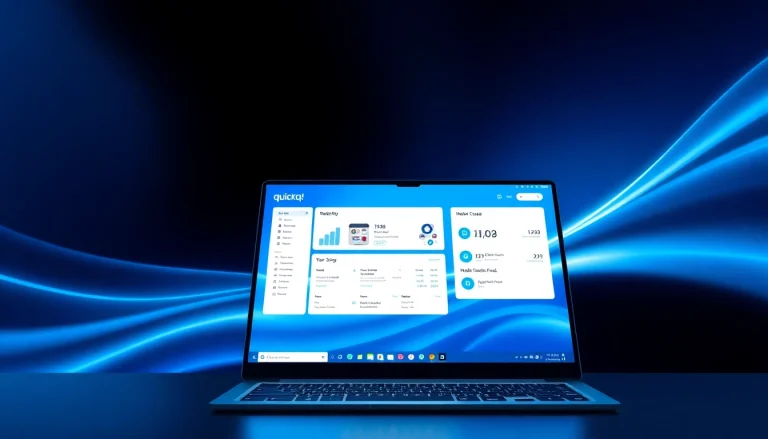Understanding the ChatGPT Chatbot: Overview and Benefits
The landscape of digital interaction has evolved considerably over the past few years. Among the most transformative innovations in this arena is the chatgpt chatbot. By leveraging artificial intelligence, these chatbots enhance customer engagement, streamline communication, and provide personalized user experiences that were previously unimaginable. In this comprehensive guide, we will delve into the various facets of the ChatGPT chatbot, exploring its evolution, key features, and the unique advantages it offers to businesses and users alike.
The Evolution of Chatbots
Chatbots have come a long way since their inception. The earliest chatbots, such as ELIZA and ALICE, operated on scripted responses, limiting their interaction to pre-defined paths. However, the rise of AI and machine learning has ushered in a new era where chatbots can understand context, learning from user interactions to refine their responses and enhance engagement.
ChatGPT, developed by OpenAI, epitomizes this evolution. Utilizing deep learning architectures, particularly Generative Pre-trained Transformers, ChatGPT can generate human-like text that facilitates fluid and dynamic conversations. The adaptability of these chatbots has made them indispensable across various sectors, from customer service and education to healthcare and entertainment.
Key Features of ChatGPT Chatbot
The ChatGPT chatbot brings several powerful features that set it apart from traditional chatbots:
- Natural Language Processing (NLP): ChatGPT can understand and generate text in a conversational manner, making interactions feel more natural.
- Contextual Awareness: Unlike earlier chatbots, ChatGPT can maintain context across conversations, enabling richer and more meaningful dialogues.
- Personalization: By analyzing user behavior and preferences, ChatGPT can tailor its responses to suit individual needs, enhancing user satisfaction.
- Multilingual Support: The ability to converse in multiple languages expands the reach of the ChatGPT chatbot, making it a viable option for global audiences.
- Integration Capabilities: ChatGPT can seamlessly integrate with various platforms, including websites, social media, and messaging apps, providing a unified communication solution.
How ChatGPT Enhances User Interaction
One of the significant benefits of employing a ChatGPT chatbot is its ability to enhance user interactions. Traditional customer service often faces challenges such as long wait times and limited availability. However, ChatGPT offers 24/7 support, providing instantaneous responses and ensuring that users feel valued.
Furthermore, its capacity to handle complex queries allows businesses to cater to a broader range of customer inquiries without the need for human intervention. This not only improves user experience but also frees up human resources to focus on more complex and critical tasks.
Setting Up Your ChatGPT Chatbot
Deploying a ChatGPT chatbot on your website can revolutionize user engagement. Below, we outline the essential steps for setting it up effectively.
Choosing the Right Platform
Before integrating a ChatGPT chatbot, it’s crucial to determine the platform that best suits your needs. Popular options include cloud-based solutions like AWS, Google Cloud, or Microsoft Azure. Selecting a platform should hinge on factors like scalability, ease of integration, and pricing.
Researching potential platforms will also help identify which offers the best support for API integrations necessary for ChatGPT functionality.
Integrating ChatGPT into Your Website
Integrating ChatGPT into your website involves several technical steps:
- Select a Development Framework: Choose a programming language and framework that aligns with your website architecture. Popular choices include JavaScript for web apps or Python for backend integrations.
- Access the ChatGPT API: OpenAI provides API access for developers to connect their applications to the ChatGPT model. You will need to sign up for API keys through the OpenAI website.
- Build the Chat Interface: Design a user-friendly chat interface on your website, complete with input fields for users to submit their queries and a display area for chatbot responses.
- Test and Optimize: After integration, conduct thorough testing to ensure that the chatbot responds accurately and efficiently to user inputs. Monitor performance metrics and user feedback for ongoing improvements.
Customizing Responses for Better Engagement
To maximize the benefits of your ChatGPT chatbot, customization is key. Utilize the following strategies:
- Define User Personas: Understand the different types of users who will interact with your chatbot and tailor responses accordingly.
- Set Up Contextual Prompts: Use prompts that guide the chatbot in understanding the specific context of user queries to enhance relevance and engagement.
- Incorporate Feedback Loops: Regularly update the responses based on user feedback, ensuring the chatbot stays relevant and effective in addressing user needs.
Best Practices for Using ChatGPT Chatbot
Once your ChatGPT chatbot is live, implementing best practices becomes essential to ensure optimal performance and user satisfaction.
Optimizing User Queries and Feedback
Encourage users to interact openly with the chatbot by optimizing query structures. Implement features that allow users to provide feedback easily, such as thumbs up/down buttons after a response. This feedback loop will enhance the chatbot’s learning capabilities and improve future interactions.
Ensuring Accessibility and Inclusiveness
Accessibility is a critical consideration for any digital tool. Ensure that your ChatGPT chatbot is usable by individuals with disabilities by:
- Implementing keyboard navigability for users who might struggle with standard mouse usage.
- Providing speech-to-text features that allow users to communicate their queries verbally.
- Ensuring compatibility with screen readers and other assistive technologies.
Monitoring Performance Metrics
Regularly monitor performance metrics to assess the effectiveness of your ChatGPT chatbot. Key metrics to track include:
- Engagement Rate: Measure how often users interact with the chatbot by tracking the number of queries received.
- User Satisfaction Scores: Collect data on user satisfaction through surveys or feedback forms following interactions.
- Response Accuracy: Analyze how accurately the chatbot answers user queries, providing insights for necessary adjustments.
Common Challenges in Implementing ChatGPT Chatbot
While deploying a ChatGPT chatbot brings numerous benefits, it’s crucial to be aware of potential challenges that may arise during implementation.
Addressing User Privacy Concerns
With regulatory frameworks like GDPR and CCPA, user privacy has become a crucial concern for many organizations. ChatGPT chatbots must adhere to data protection regulations by implementing measures such as:
- Transparent data handling policies that inform users of how their data is being used.
- Secure data storage and transmission protocols to prevent unauthorized access.
- Regular audits to ensure compliance with evolving privacy regulations.
Overcoming Technical Barriers
Integrating advanced technologies like ChatGPT may present technical barriers, especially for organizations with limited IT infrastructure. To overcome these challenges:
- Invest in training staff or hiring specialists with expertise in AI and bot development.
- Leverage third-party development platforms that offer user-friendly interfaces for integration.
- Utilize community forums and support groups to find solutions to common technical issues.
Managing User Expectations
Users may develop unrealistic expectations regarding the capabilities of a ChatGPT chatbot. To manage these expectations effectively:
- Clearly communicate the chatbot’s capabilities and limitations through onboarding messages.
- Utilize conversational acknowledgments that reassure users that their inquiries are being taken seriously, even if the chatbot cannot provide an immediate solution.
- Continuously update users on improvements and enhancements made to the chatbot based on feedback received.
Future Trends in Chatbot Technology
The future of chatbot technology is bright, with innovations on the horizon that promise to further enhance capabilities and user experiences.
AI Advancements and Chatbot Capabilities
The ongoing advancements in artificial intelligence, such as reinforcement learning and better natural language models, are set to elevate chatbot capabilities. Future iterations of ChatGPT may display improved emotional intelligence and adaptability, allowing for even deeper and more impactful conversations with users.
The Rise of Conversational Commerce with ChatGPT
Conversational commerce is gaining traction, with more businesses recognizing the potential of chatbots to drive sales and enhance customer journeys. Integrating ChatGPT chatbots into e-commerce platforms will pave the way for personalized shopping experiences, allowing customers to receive product recommendations and support seamlessly.
Preparing for User-Centric AI Solutions
The demand for user-centric AI solutions will continue to grow, necessitating companies to focus on developing chatbots that prioritize user experience. Factors such as emotional connections, personalized engagement, and holistic service offerings will shape the next generation of ChatGPT chatbots.








